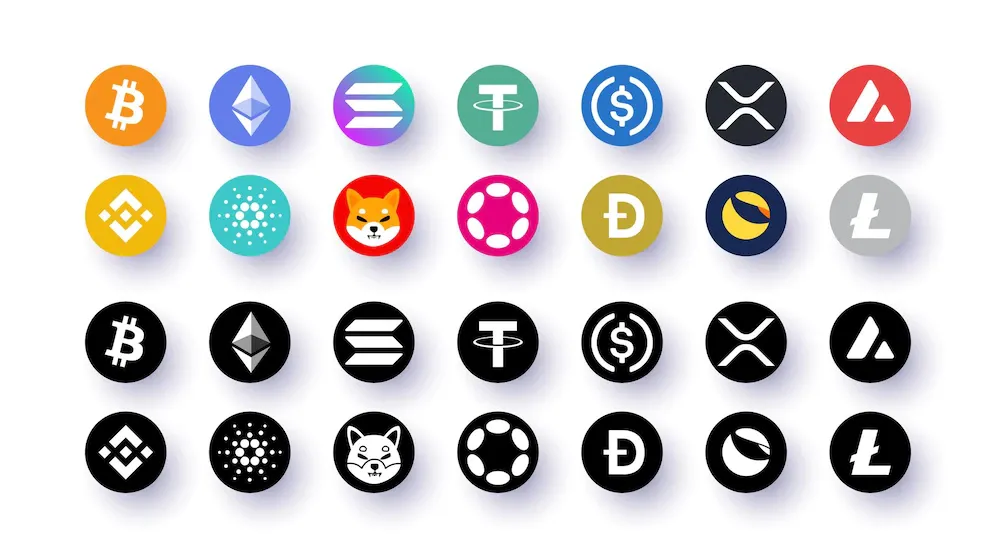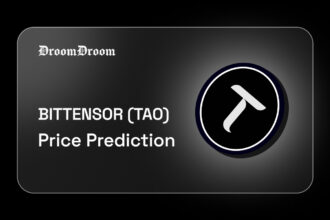According to CoinMarketCap, there are approximately 22,236 cryptocurrencies and 535 exchanges. Yet new projects continue to emerge with various tokenized solutions for different industries. The older projects often completed their public fundraising phase before going public on the exchanges. The trend with many new projects is to get their token listed on an exchange without first conducting a token sale. Listing your token on any exchange offers an opportunity to enter a market full of buyers and sellers.
- Importance of Listing a Crypto Token
- Ability to Trade
- Expansion Into New Markets and Community Growth
- Token Sales
- Partnership in New Markets
- Getting a Crypto Token Listed on an Exchange
- Part I: Research
- Difference Between a Coin and a Token
- Research for the Suitable Crypto Exchanges
- Timeline and Budget
- Avoiding Scams and Fraud
- Proof of Reserves
- Part II: Listing Process
- Process After Having Applied for a Crypto Token Listing
- Conclusion
Getting your token listed on an exchange is a difficult, lengthy, but rewarding endeavor. It entails in detail research about the exchange, preparing applications, negotiating listing fees, and launching.
So how do you list your crypto token listed on any exchange? How to choose the correct exchange while avoiding scams and fraud? To know the answer to these questions, keep reading on.
Importance of Listing a Crypto Token
First, let’s discuss why we need to list. The main goal is to trade, but a good quality listing has several other components:
Ability to Trade
Exchanges give the tokens a medium for trade. The token will be freely available for purchase and sale by project community members, providing both the project and the token a chance to prosper.
Expansion Into New Markets and Community Growth
Each crypto exchange is a community based on different principles. Listing on a new crypto exchange means entering new markets. Think of these exchanges as marketplaces in the real world. The way each new market in the real world is an opportunity for traders to expand their business, the same way, each new listing is a new opportunity for the token to trade. Some businesses have traders all over the world, while there are also businesses more focused on specific markets.
Besides increasing trading volume and liquidity, listing on a new exchange can help a project gain the support of other exchange users. This will enable it to convert them into community members and establish its presence on the exchange.
Token Sales
Most often, the project founders are the largest holders of the token at the time of launch. Tokens frequently lack the liquidity needed for growth and development, but organizing an ICO/IEO round is not always essential or practical. The founders may occasionally act as traders who sell and buy the token as needed for project development, provided that doing so does not conflict with the project’s financial model or obligations to the token holders. This is possible if the token has a successful listing and sufficient liquidity.
Partnership in New Markets
A new listing is frequently an entry into a new market. You can form alliances with other companies operating in your sector in these areas, which would only strengthen the impact of your listing. Getting listed makes it simpler to locate and negotiate partnerships. Thus this also works in the reverse direction.
Getting a Crypto Token Listed on an Exchange
Part I: Research
Every aspect of the crypto world is dominated by research. The more you read and learn, the better the chances are of your project and money being safe. It would be best if you first learn about the exchanges in order to be listed on one. It includes the following:
Difference Between a Coin and a Token
All those who are new to the cryptocurrency segment think that coin and token can be used interchangeably. Any cryptocurrency with a separate, independent blockchain (such as Bitcoin, Ethereum, XRP, etc.) is called a coin. Cryptocurrencies called tokens exist on other blockchains and don’t have their blockchain. They gain from its technology since they reside on another blockchain. (ERC-20 tokens).
Research for the Suitable Crypto Exchanges
With so many exchanges available, choosing the suitable exchange for your token can take time and effort. The exchange selection would depend on the goals of your project and specific other criteria:
- The reputation of the exchange
- Do you want your token on centralized or decentralized exchanges?
- How safe is the exchange for users
- Whether it is possible to trade in fiat money
- Transparency on proof of reserves.
- Listing fees
- How quickly can the token be listed
- Target geographical market
- Integration of the token with your platform
- Does the exchange offer spot, margin trading, or staking?
- The volume of the exchange
- Customer service
Answering these questions would bring a clearer picture of your decision-making.
Timeline and Budget
Timelines and budgets are essential for any project. With so many exchanges available, there is something for everyone. Some exchanges can get your token listed quickly, while some have longer processes taking up more time. The same is true for listing prices also. Some exchanges allow free listing, while others levy fees.
There are two types of exchanges, centralized and decentralized. Decentralized exchanges allow for quick listings. Use a decentralized exchange to get your token listed quickly. If your goal is to get listed on a top-tier exchange, you will have to go through a longer process.
It also matters how much you are ready to pay for the listing. Some top-tier exchanges have exorbitant prices and longer processes for listing. However, if you do not want to spend on the listing, there are still options, like Kraken, that allow no-cost listing. Consider all these factors and research before deciding.
Avoiding Scams and Fraud
The main thing you should be on the lookout for is fraud and scams. Examining volume, online reputation, and website traffic are a few ways to reduce this risk. You may also utilize CoinMarketCap’s Exchange Score as a reference. Scores are determined based on variables such as “web traffic factor,” “average liquidity,” “volume,” and “confidence that the volume indicated by an exchange is real,” which are then added to a score from 1 to 10 (10 being the highest).
Proof of Reserves
In light of recent scams and events in the crypto world, it wouldn’t hurt to be extra cautious. Knowing whether your chosen exchange has audited reserves or has disclosed its proof of reserves in a public and verifiable manner (e.g. etherscan) is another crucial factor in light of recent crypto market developments. Kraken and Binance are two exchanges that are currently doing this.
The push for full Proof of Reserves (#POR) was initiated by #Binance CEO, Changpeng Zhao, who urged all #crypto exchanges to provide a Merkle tree Proof of Reserves to prove they're not running a fractional reserve. 💪
Deep dive into this method 👇https://t.co/PxzK4w2qF4
— CoinMarketCap (@CoinMarketCap) January 14, 2023After completing this research:
- Develop a list of your preferred target exchanges.
- Review each listing requirement in depth.
- Search online for opinions on how long and complex the listing process is.
Part II: Listing Process
Completing and Submitting the Paperwork
As you might have read above, there are different listing processes for different exchanges. This stage comprises gathering all the data needed to complete the submission procedure and reviewing every criterion specified on each target exchange.
As your research progresses, you will realize that decentralized exchanges have simpler processes than centralized exchanges. For some top-tier centralized exchanges, there are a lot of eligibility and legal requirements. Most of these exchanges work in regulated environments and merely seek to protect their users by listing only top-notch projects. If you pass their requirements and fulfill the qualifying conditions, you should try to get through this process. Please bear in mind, though, that there is a 98% chance you won’t hear from some exchanges, like Binance, after applying.
So it’s best to evaluate your priorities and chances before filling out their 70+ question application process. Although, the plus side of this situation is that if you collect all the information requested on the lengthy form, you will likely have all you need to file a listing application elsewhere.
A Typical Crypto Project Application Would Ask for the Following Details
- Project details like name, coin ticker, website, token address, number of holders, and one-sentence pitch.
- Purpose, challenges, target market, and target users, project history, long-term goals, a thorough quarterly roadmap for the coming few quarters, and leading rivals
- Whitepaper, management team, the scope of the project
- Nature of the project like protocol, stablecoin, DeFi, etc.
- Status of the project
- Signed NDA for some exchanges like Binance
- Token and tokenomics
- Token listing on CoinMarketCap
- Links to social profiles, DAU, MAU, Community
- Details of the team
- Legal entity review
- Security audit report
- Planned post-launch marketing initiatives
- Acceptance of the possibility of the cryptocurrency token or coin being delisted without a refund
- Collaboration with a cryptocurrency liquidity and market maker. These days, many exchanges choose to work with projects that may visit the exchange with a market maker.
Awaiting the Review on Application
Centralized exchanges, on average, can take 2-3 months for review. For some top-tier exchanges, it might take even longer. The review process depends on the lengthiness of the application form. There are four possible outcomes following the exchange’s initial evaluation of the application
- No response
- Rejection
- Request for further documentation
The listing are neither accepted nor rejected; they are only delayed due to the need for additional legal proof or minor technological changes.
- Full acceptance
Further technical changes for the listing process are required if the response is favorable and the application is approved. For instance, Binance mandates that projects not listed on the exchanges list be first listed on Binance DEX, which would necessitate a migration or swap plan to the Binance Chain. Aside from that, many exchanges might employ technology based on other blockchains, necessitating the creation of compatible tokens.
Introductions and linkages are significant in keeping the ball moving. If you and your team are already well-connected, that’s fantastic; your chances of success will be much higher. In either case, working with a market maker and listing your product will improve your chances of (early) success.
Process After Having Applied for a Crypto Token Listing
Your work is not over once you have applied for a listing. The real work starts after that. Crypto exchanges advise applicants to carry on with their activities whether or not they are chosen. Exchanges frequently keep an eye on older listing requests. They can decide to get in touch with them based on their current market performance even though they were previously denied.

There are certain common considerations every cryptocurrency project must adhere to, irrespective of their size or status.
Share Regular Updates
Sharing regular updates with the general public is a great way to get noticed by the exchanges. Projects that have cultivated the habit of delivering consistent weekly or monthly updates are well-liked by exchanges. Twitter, official blogs, Medium, GitHub commits, and other platforms are some of the popular ways to share frequent updates.
Embed Native Ecosystem
Any exchange will prefer your token if it is already compatible with its in-house chain. Cryptocurrencies based on the BEP-20 token standard have a higher chance of being listed on Binance than any other cryptocurrency exchange.
Binance also advises integrating BNB/Binance USD (BUSD) into the project’s ecosystem to increase the likelihood of being listed.
However, Coinbase emphasizes a cryptocurrency’s standing in managing a regulated digital asset. Therefore, coins that have already received regulatory permission will have a better chance of clearing Coinbase’s screening procedure.
Active Community
It is vital in building a community. An active community is a sign of the longevity of the project. The project’s general activity is sustained and maintained by voting procedures for system updates, timely airdrop chances, and other community-supported activities.
Finally, projects must refrain from contacting officials and owners of cryptocurrency exchanges directly to inquire about approval status or to share any white papers. When they receive any communication from the cryptocurrency exchange, projects must verify that they have received communications from an official email address, typically signed with a digital signature. Remember that as new laws and services are implemented, the requirements for being listed on a cryptocurrency exchange will continue to change.
Conclusion
One of the most crucial phases in developing any cryptocurrency project is listing on the exchange. Once the first exchange has a good trading volume, consider expanding the markets by listing on the other exchanges. Projects can be simultaneously listed on multiple exchanges. This is acceptable in certain situations but not others; there is no one-size-fits-all solution.




















